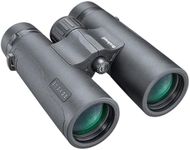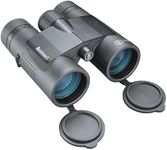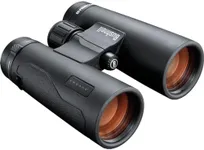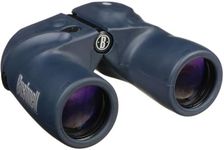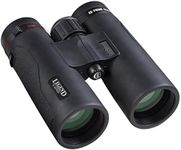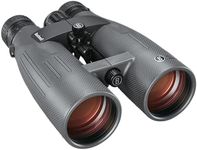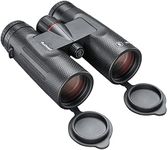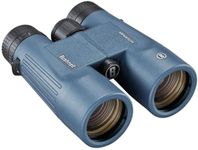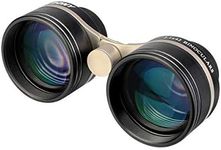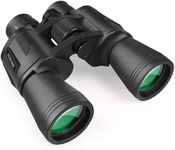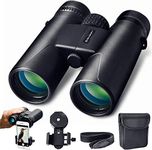Buying Guide for the Best Bushnell Binoculars
Choosing the right binoculars can greatly enhance your outdoor experiences, whether you're bird watching, hiking, or attending a sports event. It's important to understand the key specifications that will affect the performance and suitability of the binoculars for your needs. By focusing on these specs, you can make an informed decision and select the best binoculars for your activities.MagnificationMagnification refers to how much closer the object will appear compared to the naked eye. This is usually represented by a number followed by 'x', such as 8x or 10x. Higher magnification allows you to see more detail but can also make the image shakier and reduce the field of view. For general use, 8x or 10x magnification is often ideal. If you need to see very fine details or are observing distant objects, you might prefer higher magnification, but keep in mind the potential trade-offs.
Objective Lens DiameterThe objective lens diameter is the size of the front lenses, measured in millimeters. This spec is important because it determines how much light the binoculars can gather, affecting image brightness and clarity. Larger diameters (e.g., 42mm or 50mm) are better for low-light conditions and provide brighter images, but they also make the binoculars heavier and bulkier. Smaller diameters (e.g., 25mm or 32mm) are more compact and lightweight, making them easier to carry for extended periods. Choose based on your need for portability versus image brightness.
Field of ViewField of view indicates the width of the area visible through the binoculars at a specific distance, usually measured in feet at 1000 yards. A wider field of view allows you to see more of the scene without moving the binoculars, which is useful for tracking moving objects like birds or wildlife. Narrower fields of view provide more detail but require more precise aiming. If you're watching fast-moving subjects or scanning large areas, opt for a wider field of view. For detailed observation of stationary objects, a narrower field of view may be sufficient.
Eye ReliefEye relief is the distance between your eyes and the binoculars' eyepieces where you can still see the full image. This is particularly important for people who wear glasses. Longer eye relief (e.g., 15mm or more) allows for comfortable viewing with glasses, while shorter eye relief may require you to remove your glasses to see the full image. If you wear glasses, look for binoculars with longer eye relief to ensure a comfortable and complete viewing experience.
Prism TypeBinoculars use prisms to correct the orientation of the image. The two main types are Porro prisms and roof prisms. Porro prisms generally provide better image quality and depth perception but result in bulkier binoculars. Roof prisms are more compact and lightweight but can be more expensive and may have slightly lower image quality. If you prioritize image quality and don't mind a larger size, Porro prisms are a good choice. For a more compact and portable option, roof prisms are preferable.
Waterproof and FogproofWaterproof and fogproof features protect binoculars from moisture and internal fogging, which can be crucial for outdoor use in various weather conditions. These features are achieved through sealing and purging the binoculars with inert gas. If you plan to use your binoculars in wet or humid environments, or if you want to ensure durability and longevity, look for models that are both waterproof and fogproof.
Weight and SizeThe weight and size of binoculars affect how comfortable they are to carry and use for extended periods. Larger binoculars with bigger lenses tend to be heavier, which can be tiring to hold for long durations. Compact and lightweight models are easier to carry and handle but may compromise on image brightness and clarity. Consider how you will be using the binoculars and choose a size and weight that you can comfortably manage during your activities.
